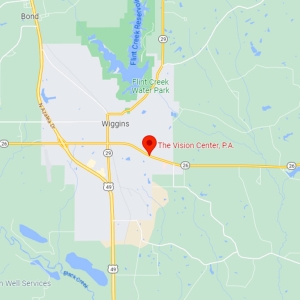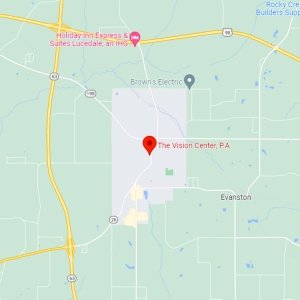FAQS
How Often Should I Have An Eye Exam?
The American Optometric Association (AOA) recommends that adults wearing glasses or contacts and adults aged 61 and older should see their eye doctor every year or as recommended.
What Should I Bring To My Eye Exam?
You should provide your doctor with a list of all prescription medications and any vitamins or dietary supplements you’re currently taking or regularly took in the past. You should also bring your glasses or wear your contacts and a copy of your most recent prescription. Your eye may be sensitive to light for a few hours after having your pupils dilated so you may want to bring sunglasses.
At What Age Should Children Begin Seeing An Eye Doctor?
According to the American Optometric Association (AOA), infants should have their first comprehensive eye exam at 6 months of age. Children then should have additional eye exams at age 3, and just before they enter the first grade. For all school aged children it should be annually as recommended by their optometrist.
What Is The Difference Between A School Screening And An Eye Exam?
To put in simple terms, a screening is more or less like a pop quiz at school. It’s a short, uncomplicated way to see if you actually know anything about the subject matter over all. A vision screening is similar. It is a very quick and simple way to test if there are any obvious indications of a vision or eye problem over all.
A comprehensive eye exam, on the other hand, is the actual test. The way a test in school is designed to deeply investigate how much you know through different types of questions, a comprehensive exam investigates the overall health of your eye by testing different dynamics.
This type of eye exam takes into account your medical history and the vision history of you and your family. It tests the external and surface parts of your eye.
This in-depth exam also tests your eyesight. Doctors can determine if you need glasses or contacts through testing if you have a refractive error , usually through autorefractor to get an idea of your vision before making you read different letters through different lenses.
Vision screenings, though a great surface level way to make sure nothing is obviously wrong, should never replace comprehensive eye exams
What Is Myopia (Nearsightedness)?
Nearsightedness is a refractive error that makes distant objects look blurry. It typically happens when the eye is longer than normal causing the focal point to fall short of the retina.
What Is Hyperopia (Farsightedness)?
Farsightedness is a refractive error that makes close-up objects look blurry. It typically happens when the eye is shorter than normal causing the focal point to fall behind the retina.
What Is The Difference Between Nearsightedness And Farsightedness?
Nearsightedness, or myopia, causes objects in the distance to be blurry while farsightedness, or hyperopia, causes near objects to appear blurred.
What Is Presbyopia?
Presbyopia is the hardening of your eyes’ natural lenses. This makes it harder to see sharp images at all distances.
What Are Presbyopia Symptoms?
One of the early indicators of presbyopia is trouble with reading fine print. If you find yourself having to hold books farther away to see them clearly, you should talk to your eye doctor.
Other symptoms include:
- Blurred vision at normal reading distance, including while wearing your normal glasses or contact lenses
- Holding reading materials at arm’s length to focus properly
- Headaches
- Eyestrain
- Fatigue while reading or doing close-up work such as sewing
What Is The Difference Between Hyperopia (Farsightedness) And Presbyopia?
The difference is cause and age. Hyperopia is usually caused by an eye that is shorter than normal, while prebyopia is a result of the normal aging of the eyes’ lenses. Hyperopia can happen in childhood and later while prebyopia only occurs after 40 years of age.


